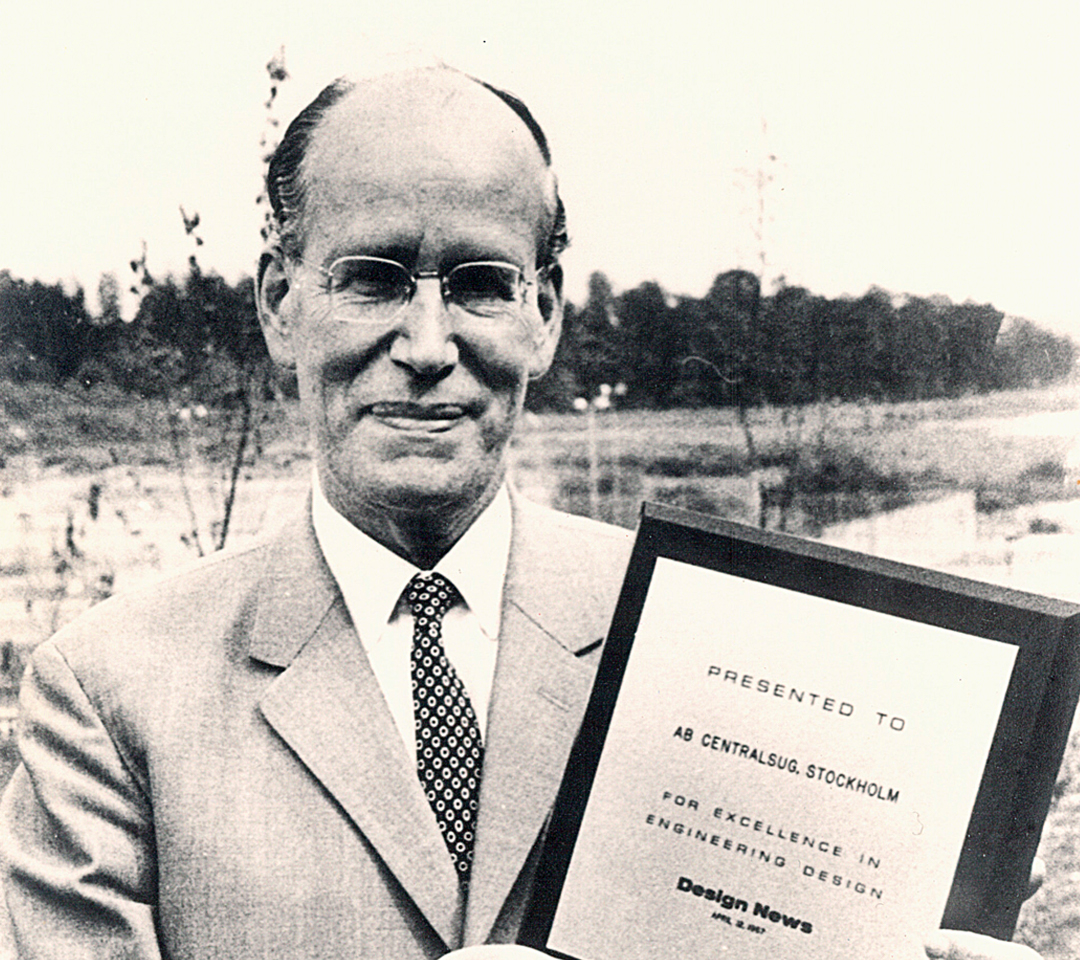Insights
Healthcare,Sustainability
Elevating soiled linen safety protocols in healthcare
Effective management of soiled linen in healthcare is essential for infection control. Traditional manual handling poses significant health risks due to exposure to infectious agents, highlighting the need for advanced automated solutions.

The careful management of soiled linen within healthcare environments is crucial in the broader spectrum of infection prevention and control measures. Historically, the conventional approach toward handling soiled linen through manual processes has presented considerable health risks. These include potential exposures to infectious agents, which underscore the urgent necessity for evolving toward more sophisticated and automated solutions in handling these materials.
15%
OF THE TOTAL AMOUNT OF PRODUCED HEALTHCARE WASTE IS HAZARDOUS AND CAN BE INFECTIOUS, TOXIC OR RADIOACTIVE
11 kg
OF HAZARDOUS WASTE PER HOSPITAL BED PER DAY (KG/BED/DAY) PRODUCED BY HIGH-INCOME COUNTRIES
2 million
MEDICAL PERSONNEL ARE EXPOSED TO PATHOGENS AS A RESULT OF THEIR DAILY WORK ROUTINES, GLOBALLY
5,2 million
PEOPLE WORLDWIDE DIE EACH YEAR, INCLUDING 4 MILLION CHILDREN, DUE TO ILLNESSES CAUSED BY UNMANAGED MEDICAL WASTE
106 –108
CFU/100 cm2
BACTERIAL LOADS OF FABRIC ON TEXTILES THAT ARE HEAVILY CONTAMINATED WITH POTENTIALLY INFECTIVE BODY SUBSTANCES
The U.S. Centers for Disease Control and Prevention (CDC), recognising the inherent risks and the imperative for improved safety, has laid comprehensive guidelines to improve best practices in managing and processing linen and laundry within healthcare settings. These guidelines are meticulously designed to elevate safety protocols, significantly mitigating the risk of infection transmission among patients and healthcare workers. The move towards leveraging advanced systems in handling soiled linen is not merely a strategic shift but a critical step towards fostering safer healthcare environments. This transition is fundamental in ensuring adherence to stringent infection control practices, ultimately safeguarding patient and staff welfare in healthcare facilities.
Some best practices for linen (and laundry) handling
- Automated Handling Systems: Introducing a full-vacuum waste collection system and automated linen handling can dramatically lower the risk of spreading pathogens, protecting healthcare workers and patients.
- Protective Practices: Maintaining a safe distance when handling contaminated linen, utilising appropriate protective gear, and employing sealed transportation methods for textiles are fundamental steps in minimising exposure risks.
- Infrastructure Improvements: Enhancing the design, maintenance, and operation of linen chutes—and ensuring they function under negative air pressure—can prevent the aerosolisation and spread of contaminants.
- Strategic Recommendations: For healthcare facilities, implementing a comprehensive waste management system that includes access-controlled, concealed inlets for waste and linen ensures not only the safety of healthcare workers but also contributes to a more efficient, environmentally friendly waste management protocol.
The conversation surrounding waste management, particularly in healthcare, is multifaceted and challenging. However, by recognising the inherent risks associated with manual waste handling and embracing strategic, technology-driven solutions for soiled linen management, it’s possible to mitigate these hazards comprehensively. As industries and healthcare facilities adapt to these advanced methodologies, the vision for a safer, more sustainable future in waste management becomes increasingly attainable.
| Total number of beds | Daily soiled linen (tonnes) | Reduced manual handling by | |
|---|---|---|---|
| Beijing Chaoyang Hospital (East), China | 500 | 2,5 | 65% |
| Hospital General Universitario Santa Lucía, Cartagena, Spain | 1000 | 3 | 64% |
| Kunshan Eastern Medical Center, China | 2000 | 2,2 | 50% |
| Hospital de la Santa Creu i Sant Pau, Barcelona, Spain | 700 | 2,7 | 64% |
| Sirio Libanes Hospital, Brazil | 150 | 0,5 | 34% |
What the future holds
Implementing an Automated Waste Collection System (AWCS) presents a comprehensive solution to the hazards and inefficiencies identified in manual waste handling. By leveraging technology, AWCS can significantly mitigate health risks, reduce the potential for injuries, and promote environmental sustainability.
- Health Hazards Reduction
The AWCS minimises human exposure to hazardous substances and chemicals in waste by automating the collection and segregation processes. This automation reduces workers’ direct contact with harmful materials, thereby decreasing the risk of health complications. - Injury Risk Mitigation
Automated systems eliminate the need for physical waste handling, reducing the risk of injuries related to lifting heavy objects or accidental contact with sharp, contaminated materials. This protects workers and reduces absences due to work-related injuries, enhancing productivity. - Environmental and Economic Benefits
By optimising waste management, AWCS significantly reduces the environmental impact of waste disposal. Improved segregation leads to more efficient recycling processes, decreasing the amount of waste sent to landfills. This, in turn, minimises soil, water, and air pollution and addresses economic concerns by lowering the costs associated with health risks and environmental remediation. - Psychological Well-Being
Transitioning to an automated system improves working conditions and diminishes the stigma associated with manual waste-handling jobs. By elevating the role of workers from manual labour to system monitoring and maintenance, their job satisfaction and mental health can improve. - Wildlife and Biodiversity Protection
An AWCS can help properly dispose of and handle waste, preventing it from harming wildlife and ecosystems. With reduced chances of waste ending up in natural habitats, the threats to wildlife and biodiversity from pollution and ingestion of or entanglement in waste are significantly diminished. - Addressing the High Accident Ratio
As the UK Health and Safety Executive highlighted, integrating AWCS addresses the alarming accident ratio in the waste industry. Accidents can be substantially minimised by eliminating manual tasks that are prone to causing slips, trips, falls, and injuries from handling.
Implementing an Automated Waste Collection System can revolutionally tackle the challenges posed by manual waste handling holistically. It offers a safer, more efficient, and environmentally friendly alternative, aligning with contemporary needs for sustainable waste management practices. Transitioning to AWCS benefits those directly involved in waste collection and handling and contributes to the broader goal of preserving our environment for future generations.

Recommendations for ideal waste collection system in healthcare
- Install a full-vacuum system for general, linen and infectious waste.
- Access-controlled, concealed inlets.
- Negative air pressure in the inlets.
- There is no risk of airborne pathogens spreading from the inlet to the corridor or hospital rooms.
- Double doors for security and high-quality plastic bags for infectious waste ensure the working environment.
- No long intermediate storage of waste in inlet locks.
- Continuous disinfection of inlets and regular disinfection of the piping system.
- Enabling the healthcare workers for efficient and safe waste management.
Sources:
U.S. CENTRES FOR DISEASE PREVENTION AND CONTROL CDC
Healthcare Waste—A Serious Problem for Global Health – PMC (nih.gov)
Healthcare Waste—A Serious Problem for Global Health – PMC (nih.gov)
World Health Organization (WHO). (Year). “Health Risks of Health-Care Waste.
National Institute for Occupational Safety and Health (NIOSH). “Waste Management and Worker Safety.”

How Envac work can help
HEALTHCARE
mitigate risks and improve overall safety





